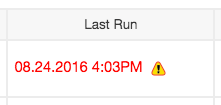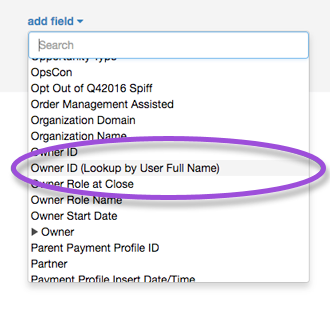Best practices and troubleshooting the Smartsheet Salesforce Connector
USM Content
To create or edit a workflow using the Smartsheet Salesforce Connector:
- You must have Editor permissions or higher on any mapped sheet.
- You must be able to log in to Salesforce and have access to the records needed to build a workflow.
- If your System Admin activates the Restrict Users setting in the Salesforce Connector, you must also hold the Salesforce User role in Smartsheet.
- Smartsheet Salesforce Connector must be a premium application available on the plan, and you should have already established an initial connection to the Salesforce environment.
- If you're unable to access the Salesforce Connector and the error message instructs you to reach out to your Smartsheet System Admin, you may need to have your permissions granted. Learn how to contact your Sys Admin.
The Smartsheet Salesforce Connector is available as a premium offering. For pricing information, contact our Sales team.
If you have the Smartsheet Salesforce Connector purchased on your plan, use the button below to log in to the Smartsheet Salesforce Connector.
Log in to the Smartsheet Salesforce Connector now
This article provides a comprehensive guide to optimizing digital workflows, focusing on best practices to ensure seamless processes and troubleshooting solutions for potential challenges.
Find and fix sync errors
You can use the following resources to find and resolve workflow errors:
- Run History: Visit this page to view the number of sync errors for a workflow, along with the error message and issue details.
- Error reports: When issues occur, the workflow owner and the person who edited the field or workflow row that caused the issue receive an email.
- Error column: Check this column in Smartsheet to review a message on rows with a sync issue.
Run History
After creating a workflow, you can go to the Run History page to see the sync history and any errors that occurred. You can access Run History by selecting the timestamp in Run Date for your workflow.

In your Run History, you can encounter several run types:
- Sync to Smartsheet: This represents workflow runs that collect changes from Salesforce and synchronize them to Smartsheet.
- Sync to Salesforce: This pertains to workflow runs where Smartsheet modifications sync to Salesforce.
- Filtered Row Finder: This involves workflow runs for changes related to issues meant to be filtered out based on your workflow's configuration. It's a background activity operating every 2 hours. Filtered out issues are categorized under Filtered out by Connector - not synced hierarchy in your sheet. For a deeper understanding, refer to Filtered out by Connector—not synced.
The Filtered Row Finder operates only for automated workflow types and functions even without specified filters in your setup.
Best practices
Save and refresh often
To minimize sync errors as users work across both systems, save changes and refresh your sheets as you make updates. Save and refresh sheet data frequently to ensure that others see your changes.
Lock columns to avoid errors
Avoid altering data in the required Record ID field within Smartsheet. To maintain data accuracy and integrity in this column, the sheet's Owner or another user with Admin rights should Lock or unlock column and rows such as the Record ID column.
Set dropdown columns to single-select
You may see errors in your data when you sync between Salesforce and sheets with multi-select dropdown lists, as single-select dropdown lists work best. Set any multi-select columns to single-select when you configure your mappings.
View changes
You can use the View history feature in Smartsheet to track modifications made to a cell. For sheets with data synchronized between Smartsheet and Salesforce, the change gets attributed to the individual who set up the workflow. This helps identify a particular user's workflow, especially if unexpected changes occur in your sheet.
Check sheet permissions on unexpectedly blank columns
If a column appears blank on a sheet you’ve mapped in your workflow, the column may be locked. Have the sheet Owner (or another Admin) grant you Admin permissions on the sheet.
Map Lookup by fields to edit related object fields
To edit a read-only field within Smartsheet, consider mapping the Lookup by… version of a related object field. This method is especially useful for tasks like updating a Salesforce record owner directly from Smartsheet, eliminating the need to manually copy and paste a User ID. For example, you can link the Owner ID (Lookup by User Full Name) field to synchronize with the User object's Full Name field.
The User object often associates with other objects, such as Account and Opportunity.

Push data from Smartsheet to Salesforce for specific rows only
Consider adding a column, such as Update Record in Salesforce, to your sheet for enhanced control over the specific rows that send data back to Salesforce. Then, within the Smartsheet Salesforce Connector workflow, establish a Sheet Filter in the Smartsheet Salesforce Connector workflow to only sync those rows with Update Record in Salesforce checked.